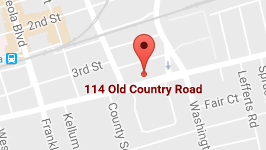White collar crime is one of those terms which is typically only half-understood by the general population. We all know that assaulting somebody is a crime. We all understand that breaking into a house and stealing an individual’s belongings is a crime. But it gets a little bit more confusing when it comes to white collar crime.
That is because these crimes exist on a more technical level. When somebody is assaulted or their house is broken into, they know they were the victim of a crime. But white collar crimes can happen to somebody without them even realizing. It could be that they trusted a financial advisor that led them astray. Typically, the person committing the white collar crime is thought to have been trustworthy. This is important as it plays directly into the origin of this category of crime.
What is White Collar Crime?
The phrase white collar crime was first used in the 1930s by noted criminologist Edwin Sutherland. It was thought at this time that criminals were all of a lower class status. In fact, it was believed that those with a high social status were incapable of committing crimes. But Sutherland coined the phrase white collar crime specifically to refer to those criminals who were otherwise persons of respectability.
Crimes such as assault, robbery, murder, are considered to be clue collar crimes. White collar crimes are more complicated and hard to identify without knowledge of the laws surrounding things like fraud. Because a person is respectable, or seems to be, people are more likely to listen to them and consent to their suggestions. As such, people can end up falling for white collar crimes like fraud without ever having the slightest idea that they’re talking to a criminal.
Nowadays white collar crime doesn’t necessarily denote any distinction of class the way it did in the past. Rather it refers to a crime that is committed either at the level of individuals or corporations in which the crime is financially motivated. With the explosion of the internet, it is hardly surprising that there has been an uptick in white collar crimes as the medium has created new opportunities for the various crimes that fall under the white collar heading.
What Crimes Fall Under the Heading of White Collar Crime?
There is a wide, wide range of crimes that are described as white collar. These can range from petit larceny to coercion, cigarette and tobacco product tax crimes to medicare fraud or even perjury. However, it is easier to get a sense of what constitutes white collar crime by breaking down a few of the more common ones:
- Fraud: A broad term, fraud covers a range of crimes that look to separate people from their money based on lies. A common fraud scheme is to say that you have a large sum of money for an individual but they must first pay a handler’s fee in order to receive it. There is no large fee and the money they are paying was given on dishonest terms.
- Ponzi Schemes: This is a scheme in which each individual is promised a large reward but only so long as they get other individuals to join the scheme. Those at the top profit from all those below them but those at the bottom are given no chance to profit except unless they continue the scheme and trick others into joining.
- Insider Trading: Insider trading occurs when somebody has information they are not supposed to, aka insider information, about the trade. If you know that your company is going to be purchasing another and thereby raising their stock then it would be insider trading to start purchasing shares in the company that is about to raise. Insider trading hedges on whether or not the knowledge used to benefit from financially was public or not.
- Embezzlement: Another wide ranging form of white collar crime, embezzlement comes down to stealing money from a company. An employee that takes some money out of the till could be guilty of both embezzlement and theft. But there are more complex embezzlement schemes which can defund thousands or even millions of dollars.
- Identity Theft and Cybercrimes: Identity theft and cybercrimes are on the rise these days as technology makes them easier. Stealing another person’s identity or hacking into a computer system to retrieve resources or information are both white collar computer crimes.
- Money Laundering: Money laundering is a tactic criminals use to make income from their illegal activities appear to be legal. A legitimate business is used to take in illegal funds so that they then appear to have been acquired legally.
- Counterfeiting: Counterfeiting is a way of making illegal money that looks like legal tender.
- Espionage: There are multiple forms of espionage but white collar espionage tends to have a focus on gaining more money, such as when an agent of a foreign government (or competing company) tries to obtain assets of a company through devious means.
How is White Collar Crime Classified?
There are two ways of classifying white collar crime. The first is individual crimes. These are financial crimes that an individual, or a small group of individuals, commits. Hacking, counterfeiting and fraud are all examples of crimes typically classified as individual crimes.
Corporate crimes happen, surprise, on a corporate level. Money laundering can happen on a corporate level, as well as insider trading, espionage or even embezzlement.
What Should I Do if I’m Accused of Committing a White Collar Crime?
White collar crimes should not be taken any less serious than a blue collar crime. You might think a murder charge is far worse than an insider trading charge but white collar crimes can do just as much to rupture your life as a blue collar crime would. You could easily see your life savings lost and your career ruined to the point that nobody in the country wants to hire you.
If you have been accused of a white collar crime then your first step should be to hire an attorney that has knowledge in the field. If you’re looking for the best, then look no further than Mirsky Law Firm. Give us a call at (516) 299-6187 to learn how we can defend you from white collar crime charges.














Comments are closed.